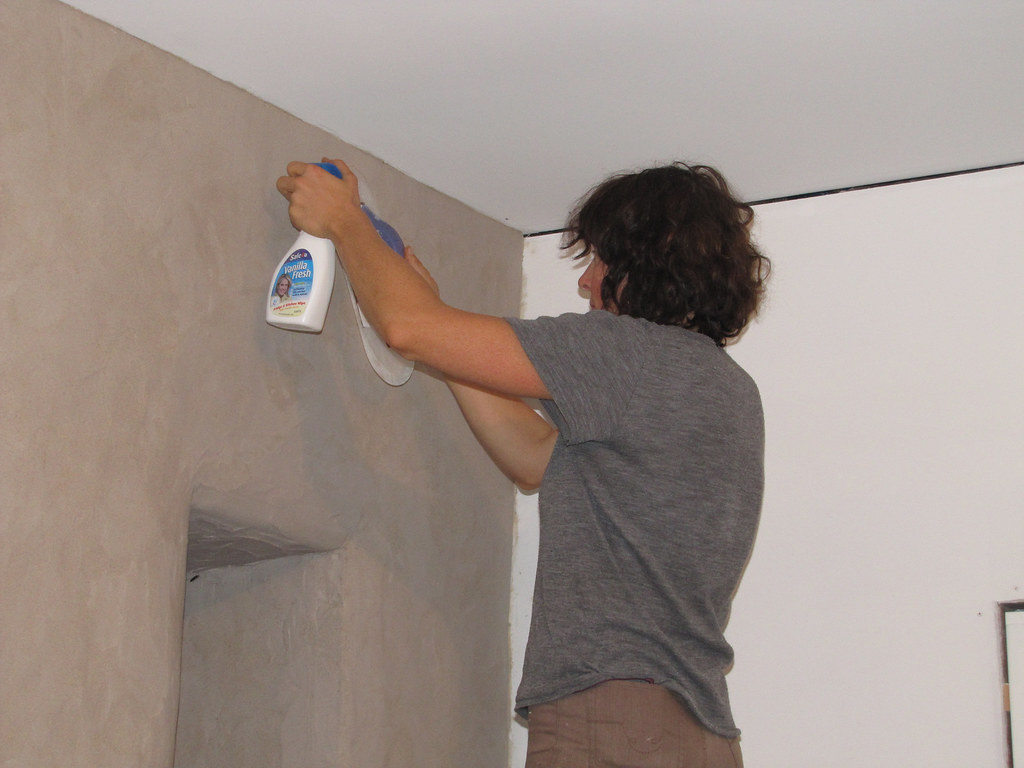Transform your home with flawless walls – discover how to plaster a wall with expert precision that rivals the professionals.
Understanding Plastering Basics
Plastering is a skilled trade that transforms rough, uneven walls into smooth, durable surfaces ready for decoration. In the UK, professional plastering requires precision, patience, and proper technique. The process involves applying layers of plaster to create a perfectly level surface that enhances both the aesthetic appeal and structural integrity of your walls. Whether you’re renovating a period property in Kent or updating a modern home in Tunbridge Wells, understanding the fundamentals is crucial for achieving professional results.
Essential Tools and Materials
- Plastering trowel (standard 14-inch recommended for beginners)
- Hawk board for holding plaster
- Mixing bucket and electric paddle mixer
- Plastering beads and scrim tape
- PVA bonding agent
- Base coat plaster (Browning or Hardwall)
- Finishing plaster (Multi-Finish or Thistle)
- Clean water and measuring tools
- Scraping tool and sandpaper
- Spirit level and straight edge
Preparing Your Workspace
- Cover all floors with thick dust sheets
- Remove or cover electrical fixtures
- Protect windows and doors with masking tape
- Ensure adequate ventilation
- Set up proper lighting
- Keep room temperature between 15-20°C
Wall Preparation: The Foundation of Success
Proper wall preparation is absolutely crucial for achieving a professional finish. According to recent industry statistics, over 80% of plastering failures are due to inadequate surface preparation. Start by thoroughly cleaning the wall surface, removing any old wallpaper, loose paint, or debris. In the UK’s often damp climate, it’s essential to address any underlying moisture issues before beginning. Check for rising damp or penetrating damp, which are common in British properties, particularly in areas like Kent with its varied weather conditions.
Assessing Wall Condition
Begin with a thorough inspection of your wall, checking for:
- Structural cracks and movement
- Damp patches or water damage
- Loose or crumbling plaster
- Uneven surfaces
- Previous repairs or patches
Surface Treatment and Priming
Before applying any plaster, proper surface treatment is essential. For new plasterboard, apply PVA bonding agent diluted 4:1 with water. For existing plastered walls, dampen the surface to control suction. In cases of high-suction backgrounds like brick or block, apply a stipple coat (a thin, splattered layer of PVA-modified plaster) to promote better adhesion.
The Plastering Process: Step-by-Step
The actual plastering process requires methodical application and attention to detail. Professional plasterers typically apply two coats: a base coat and a finish coat. The base coat provides the foundation and levels the surface, while the finish coat creates the smooth, decorative surface.
Mixing Your Plaster
Getting the right consistency is crucial:
- Use clean, cold water and follow manufacturer’s ratios
- Mix small batches initially (around 5kg)
- Achieve a consistency similar to thick cream
- Allow mixed plaster to stand for 10 minutes
- Re-mix briefly before use
Applying the Base Coat
Apply your base coat with confidence, using these professional techniques:
- Start from the bottom and work up
- Apply plaster at approximately 8mm thickness
- Use firm pressure to ensure good adhesion
- Create a level surface using a straight edge
- Allow to set until firm but not completely dry
Creating the Perfect Finish Coat
The finish coat requires extra attention to detail and careful timing. Apply when the base coat has firmed up but still has some moisture content. Use a steel trowel to apply a thin layer (approximately 2mm) of finishing plaster, working in smooth, even strokes. After initial setting, trowel the surface with a clean, wet trowel to achieve that professional sheen.
Professional Tips and Techniques
Drawing from our extensive experience at Kent Plasterers, here are some professional insights that make the difference between an amateur and professional finish. Temperature control is crucial – maintain room temperature between 15-20°C during application and drying. Work in sections no larger than you can comfortably manage, typically 1-1.5 metres square at a time.
Common Mistakes to Avoid
- Rushing the mixing process
- Applying plaster too thick or thin
- Working with incorrect temperatures
- Poor surface preparation
- Overworking the finish coat
Troubleshooting Guide
Address common issues promptly:
- Cracking: Usually due to rapid drying or excessive thickness
- Delamination: Poor bonding or contaminated surfaces
- Hollow spots: Inadequate pressure during application
- Uneven finish: Inconsistent mixing or application
Aftercare and Finishing Touches
Proper aftercare is essential for achieving the best possible finish. Allow at least 7 days for complete drying in normal conditions. Maintain good ventilation but avoid direct heat or draughts. In the UK’s variable climate, humidity control is particularly important during the drying process.
Drying and Curing
- Keep rooms ventilated but avoid strong draughts
- Maintain consistent temperature
- Allow minimum 7 days before decorating
- Check moisture levels before painting
Preparing for Decoration
Once fully dried, prepare your surface for decoration:
- Lightly sand any minor imperfections
- Apply mist coat (diluted emulsion)
- Wait 24 hours before final decoration
- Use appropriate primers for chosen finish
When to Call a Professional
While DIY plastering is achievable for many home improvement projects, some situations warrant professional intervention. Complex jobs, period properties, or areas requiring specialist techniques are best left to experienced plasterers. At Kent Plasterers, we recommend seeking professional help for: large areas exceeding 20 square metres, ornate ceiling work, heritage properties, or when dealing with significant structural issues. Remember, professional plasterers bring years of experience and specialist knowledge that can save time and ensure superior results.
FAQ
Why do people plaster over drywall?
The surface becomes much stronger. This will make drywall resistant to impact and that’s important if you have children. With plaster covering drywall, the corners will be well protected and so will the tape and joints. Plaster over drywall will also enhance sound insulation and moisture resistance.
Can you plaster straight onto a painted wall?
The condition of the paint is the most important factor to consider when plastering over a painted surface. If the paint is in good condition and not in need of any maintenance, it is perfectly fine to skim over it with plaster.
What board do you use for plaster?
HIGH SUCTION PAPER-FACED GYPSUM BOARDS SPECIALLY DESIGNED FOR VENEER PLASTERS. ToughRock® Veneer Plaster Base board and ToughRock® FireGuard X® Veneer Plaster Base are designed to bond with skim coats of specially formulated veneer plasters.
Can you plaster directly over drywall?
Plaster veneer may also be applied to ordinary drywall, or over existing walls, but this requires “gluing” the existing wall surface by painting on a special adhesive compound, and then applying a thin layer of “base coat” plaster.
Sources
[1] https://www.thisoldhouse.com/walls/21016981/how-to-plaster-a-wall
[2] https://www.youtube.com/watch?v=ey0Xj9Xe2xg
[3] https://www.youtube.com/watch?v=BK2TP1sm-vI

